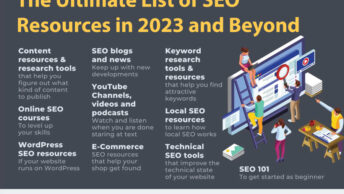There are more and more bloggers all the time and usually they want to do it well. What characterizes a good blog post? It is not as easy a question as you might think. Here we will explore what is involved.
The single blog post
Any exploration of the quality of a blog post must start with the content. Just imagine the blog post printed out on a sheet of paper. It probably will not appeal to everyone. What counts is its intended audience. How does this blog post appeal to a typical reader from the target audience? Unless this much simpler replica of the blog post works for this reader, it is unlikely to be effective when it goes live on the Web.
Considering this replica, we can understand that the headings and layout of the page and the images, if any, will all be important in determining the reader’s liking for or dislike of the blog post. The copywriter’s skills are important here in crafting appealing content. So it must work at this level but there are other factors involved once it goes live online.
Search engine visibility
The most important factor after the essential content on the blog post page is whether those target readers ever get to see it. Some readers of course will be loyal blog subscribers who eagerly await every new post. The majority will happen on the blog post by chance, most often when they are looking for web pages on a particular topic. Their search will often be done using keywords in their favorite search engine: for many that will be Google. Therefore it is important that blog posts are visible in such relevant keyword searches.
One blessing here is the blog structure works particularly well in leveraging the blog post content for good search engine visibility. Going beyond what appears in the body of the blog posts, it is also important to maximize the effectiveness of what appears in the head of the blog post — what might be called the blog post’s metadata. The Title and Description are particularly important here. If using WordPress it is important to use a plug-in like the All In One SEO Pack to be able to optimize the content of the title and of the description.
This important topic is not the main subject here, so for further reading on this you may wish to study one of the following:
- Google’s Search Engine Optimization Starter Guide (PDF file download)
- SEO Basics – a knol by Aaron Wall
- Writing Memorable Search Visible Blog Posts – The Other Bloke’s Blog
- 21 Tactics to Increase Blog Traffic – SEOmoz
- 15 Tips on Improving Search Engine Visibility – louisgray.com
Blogging objectives
Up to this point, we have stated that body content and search engine visibility must be right. What more must be considered in our attempt to create highly effective blog posts. To answer that, we must back up and pin down exactly what our objectives may be.
In some cases, the aim is to develop the best possible revenues from advertising through say Google Adsense ads. Such blogs are often labeled as MFA (Made for Adsense) blogs. In this case, we have almost done all that is required. The blog post has been crafted so that as many people will come via search engines and there is a certain appeal to the page. It is now up to Google to serve up ads that will draw the clicks of these target readers. Provided Google does that well, they and you will be satisfied
In a sense there is a disconnect here. The only objective for the blog posts is to get the visitor’s eyes looking at the page. Now Google must serve up ads which will attract those eyes and encourage those clicks. There is a delicate balance here. The blog page must be sufficiently appealing to get the reader’s interest but then readers should find the Adsense ads more attractive than other places that might be accessed from the blog post.
Some MFA blogs are particularly weak in content, but do draw the traffic. In this sense, they achieve their objective provided enough visitors click on the Adsense ads. Other blogs have more challenging objectives than this and we will examine those next.
Blogs that convert prospects to purchasers – Captology
Some blogs have other objectives than merely to maximize AdSense revenue. For example they might display advertisements for products and services for which the blog acts as an affiliate. Here the objective of the blog page is to convert someone who has an interest in the product (Prospect) into someone who wishes to actively make a purchase.
In a sense the blog page must persuade the prospect to take an action. This is a field that has been extensively studied by the Stanford Persuasive Technology Lab. They use the word Captology to describe what is involved:
Captology is the study of computers as persuasive technologies. This includes the design, research, and analysis of interactive computing products created for the purpose of changing people’s attitudes or behaviors.
Part of this of course stems from the credibility that the blog establishes and here again Stanford has provided guidelines for Web credibility. This is very much an evolving field and a slide show presentation by BJ Fogg outlines how their thinking has developed.
Engagement – the ultimate blog objective
As described to this point, it would seem that the blog post only attempts to influence the visitor. Beyond that, the most effective use of a blog comes from acknowledging that the Internet is for dialogs rather than one-sided monologues. If visitors become involved in dialogs then this is the ultimate demonstration of engagement. In other words the blog encourages them to become fully involved in the interaction.
Perhaps one good measure of engagement is the number of comments that the blog posts attract. Engagement implies involvement. For that, the blog post must encourage a strong wish to connect in the visitor. Part of that comes about by highlighting the people who are involved in the blog, as BJ Fogg emphasizes. Additionally the copy-writing must be strong so as to elicit an emotional wish to get involved.
This opens up a whole new realm of factors to consider. An introduction to all this can be found in a recent post on Affective Feedback. If true engagement is one of your objectives then this is an area you should be exploring.
At its best, the blog author(s) and its visitors, many of whom will comment from time to time, develop a strong sense of community. At that point, the blog is clearly capable of fulfilling whatever goals one might wish to set.






[…] true in most cases, this does not mean mindlessly posting is a good strategy. Barry Welford has a good writeup down at the Directory Journal on writing an engaging blog posts. Engaging readers is key but it […]
[…] How To Write Engaging Blog Posts – 02/04/2009 – DIR […]
[…] feel free to stumble, delicious, or sphinn it. Thanks for visiting!In an earlier post we described How To Write Engaging Blog Posts. What wasn’t covered was how long that blog post should be. There is no single right […]
Blogs are essential tool for any site to be more successful.
[…] true in most cases, this does not mean mindlessly posting is a good strategy. Barry Welford has a good writeup down at the Directory Journal on writing an engaging blog posts. Engaging readers is key but it […]